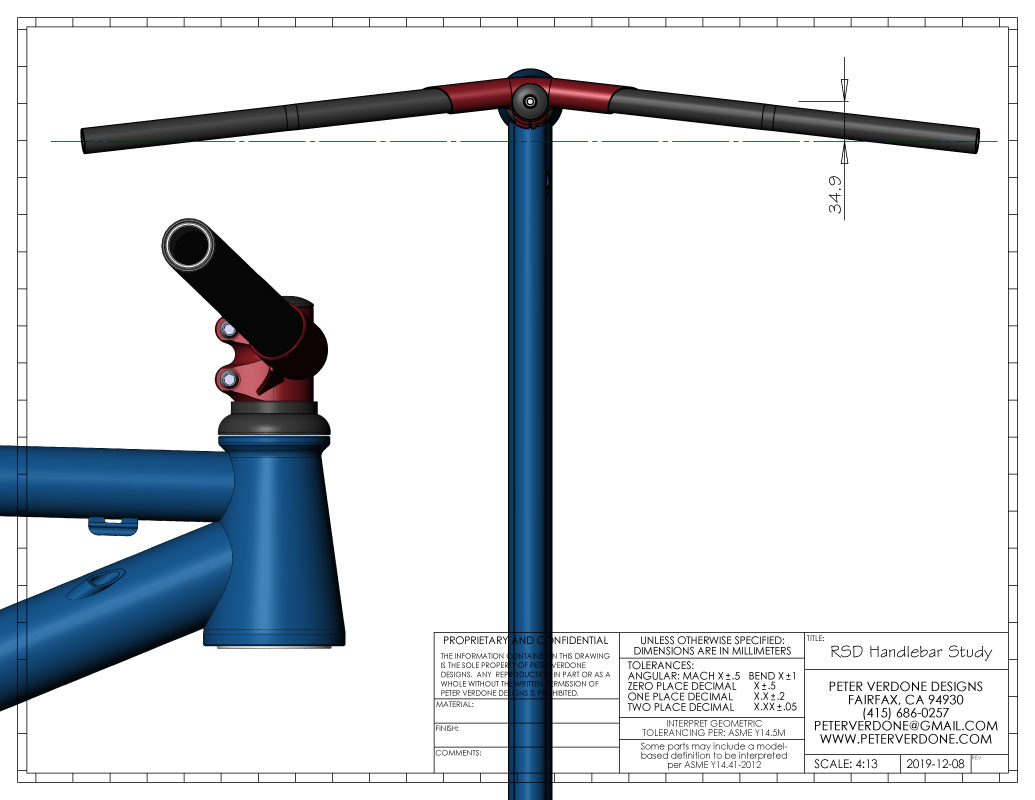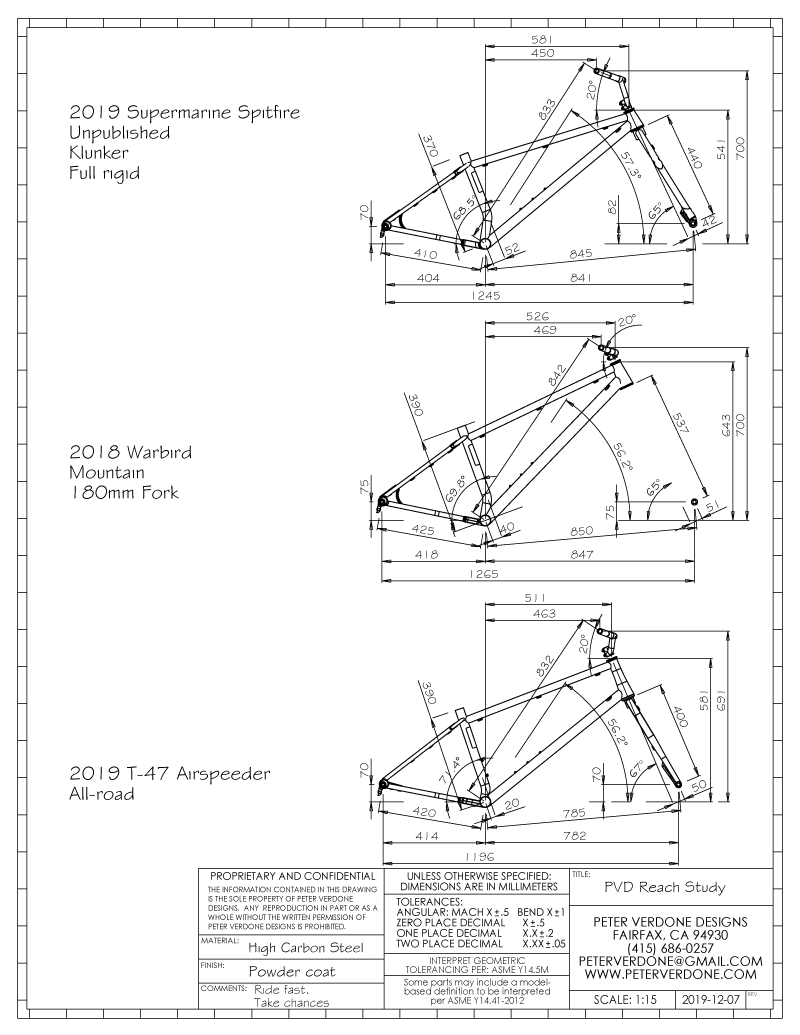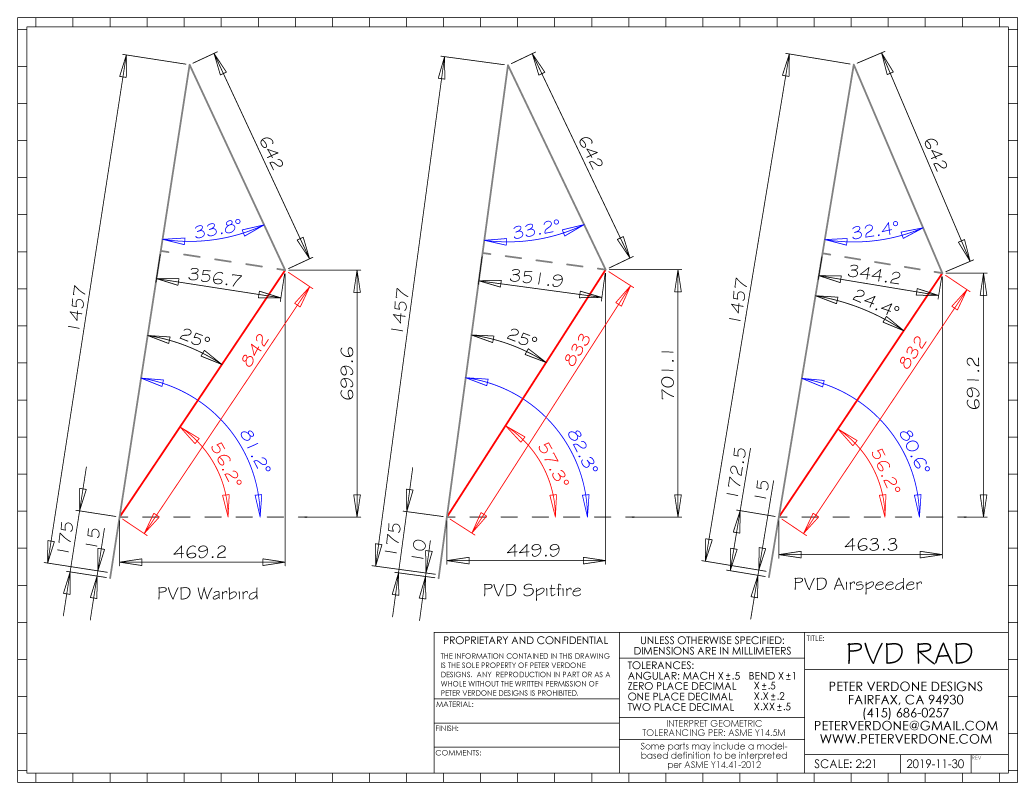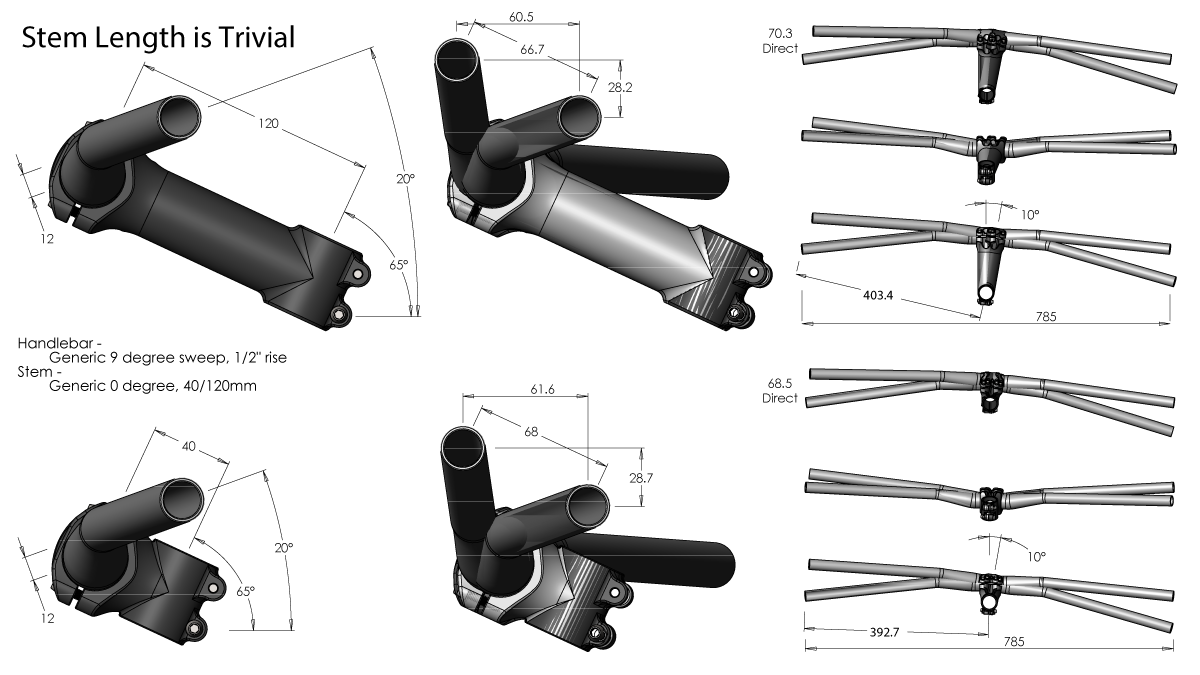The current trend in bicycle marketing is to talk about frame reach, the horizontal distance from the bottom bracket axis to the center of the top of the headtube. The ‘long’ in long/low/slack is for “longer reach” or “longer top tube”. Although this is just flagging that they don’t understand much about what they are talking about. The shills will talk about bike fit and performance and point to this dimension. This is laughable. It’s almost as bad as the old roadie moron talking about top tube length. It is big problem for novice tuners that they hear this stuff incessantly. They get confused. The ‘frame reach’ of a given bike is not a dimension that a designer or athlete is or should be interested in.
Some dimwitted journalists go even further to confuse their readers with false concepts and ideas that are completely unreasonable. Magazine marketers are the last people that you should be listening to about bicycle tuning. They don’t know anything about the topic. These people make it hard for people like me to get others to understand what is really happening on a bike. They exist only to sell bikes, not help the riders. I discuss this issue properly here; Stupid about Stems.
This will confuse a lot of folks but let’s look at this deeper into what I’m talking about. I’m 5’10” tall and of average proportions (although heavier framed). On the retail market, if a design is ‘modern’ enough mountain bike, I’ll end up on a sizing of large. Generally, these frames will have 475 to 480mm of frame reach (MY2019). I’m sure that most up to date folks will agree with this.
Of course, I rarely use commercially available frames these days as I demand a higher level of performance than most folks in the market. I design and build my own frames to take the ride to a much higher level. This is what I must do at this period in cycling. This should be embarrassing to the commercial and custom markets but they don’t care as long as they sell SKUs.
Let’s look at three recent bikes that are in my current rotation. Note: that the Supermarine Spitfire is about a week away from paint, but has the same rider fit of the PVD Sopwith Camel. Also, the Airspeeder is getting a little dated and would be longer if made today.
What do we see here? Frame reach values ranging from 511mm to 581mm. The low 511mm value reflecting a less developed version of my progressive handlebar designs. The value would be much higher if the frame were made today. These are frame reach numbers up to 100mm longer than that of commercially available bikes that have other dimensions compatible with my use. If frame reach were important, how could this be true?
More dizzying, is that the Spitfire has a much longer reach than the Warbird despite that it’s shorter and is intended for less extreme riding. This makes no sense if reach is a driving parameter.
More, even when working with currently available frame methods, 3 frames with the same reach and head tube angles but with differing head tube lengths will have the front wheel in a different place. That’s unpredictable from a handling perspective.
The obvious answer is that frame reach is not important.
As discussed in a previous post, the important value when setting up the off-road bicycle is the position of the handgrip relative to the pedals (and saddle). I was writing in that post about more nuanced ways of looking at bike fit, The klunker and all-road bike have similar values of 832mm and 833mm from the bottom bracket to the handlebar end and the Warbird has 842mm lending to the more aggressive (81.2 degree) use of the bike.
These fit numbers could be replicated on just about any bike, so why do we choose the frame design that we end up with? Simply, we place the wheels in the correct position below the rider. For off-road bikes, that usually means placing the front wheel a significant distance ahead of the crank axis. For my personal mountain bikes, that’s about 840-845mm. For all-road bikes, that would be about 800mm in the next iteration. These will change for other rider sizes and terrains but it’s a worthy reference.
That’s why we don’t talk about reach when referring to frame design. We talk about front center and forward geometry.
With fit, we need to know the details of the handlebar, stem, spacers, and headset to confirm the grip position. This is crucial in selecting a frame or designing one that fits perfectly.






